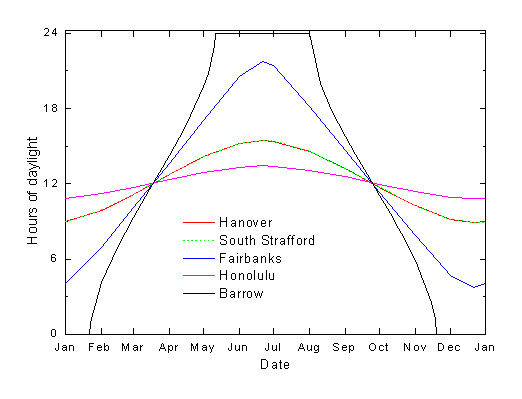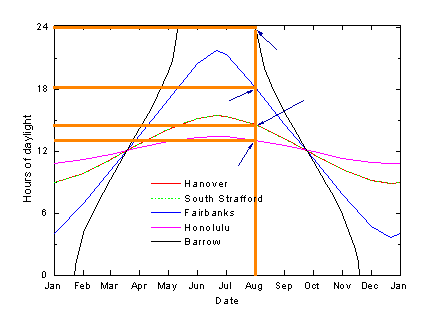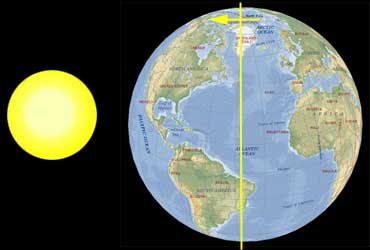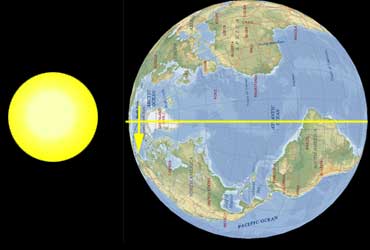
The tilt of the Earth also causes differences in the number of hours of daylight in a day. In winter there is less daylight and in summer there is more daylight. The differences become greater as you move towards the poles. For example, in winter there are 11 hours of daylight in Honolulu and 0 hours of daylight in Barrow. In summer Honolulu Hawaii has 13 hours of daylight, while Barrow has 24 hours. The graph on the right shows the number of hours of daylight throughout the year. If you haven't used a lot of graphs like this before, click here to learn more about them!

Let's say you wanted to know how many hours of daylight there are on August 1 in Honolulu. To do this, find August 1 on the bottom line of the graph. "Aug" stands for August, and since you're interested in the first day of August, put your finger on the mark right above the word "Aug." Now trace upwards with your finger in a straight line until you get to the place where the first arrow points. We've added an orange line to the graph to show you where your finger should be tracing. The arrow marks the place where your finger meets the pink line on the graph. The key for the graph above shows us that the pink line is for Honolulu. Now that you've reached the pink line, trace straight to the left edge of the graph and stop. Your finger should be a little bit above the number 12. If your finger were exactly on the 12, that would mean that there are twelve hours of daylight in Honolulu on August 1. Based on where your finger is, can you guess how many hours of daylight there really are? If you guessed 13, you're right! If this seems really confusing, you can read more about line graphs.

Now, use the same method to figure out how much sunlight there is in Barrow, Fairbanks, Hanover, and South Strafford on August 1. The lines for Hanover and South Strafford are so close together that it just looks like one red line. This is because Hanover and South Strafford are very close together, so the Earth's tilt affects them the same way.
What would happen if the earth's axis was not tilted?

What would happen if the axis was tilted 90 degrees?
